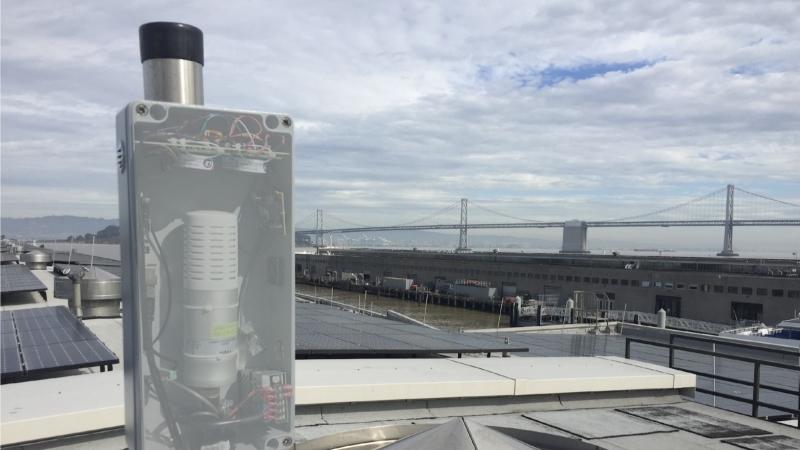Innovation transforms CO2 monitoring in San Francisco
The client: University of California, Berkeley
Vaisala solution: Vaisala CARBOCAP® Carbon Dioxide Probe GMP343
The University of California, Berkeley (UC Berkeley) has taken a bold step toward addressing air pollution by integrating the Vaisala CARBOCAP Carbon Dioxide Probe GMP343 into their innovative Berkeley Environmental Air Quality and CO₂ Network (BEACO2N) project. This case study highlights how this cutting-edge technology is redefining the landscape of air quality and greenhouse gas (GHG) monitoring, providing air quality management professionals and environmental protection agencies with the tools they need to safeguard our environment.
THE CHALLENGE: Measuring CO2 cost-effectively across a broad area
The San Francisco Bay Area, a region known for its technological advancements and urban density, grapples with significant air quality and GHG emission issues.
Traditional monitoring methods such as high-end gas analyzers are accurate but are too expensive to be used at scale for sensor networks, which are necessary to inform effective climate action. UC Berkeley recognized the critical need for a detailed, dynamic and cost-effective approach to address these challenges.
THE APPROACH: High-resolution measurements with real-time monitoring and evaluation
GMP343 is a state-of-the-art sensor that delivers unparalleled accuracy and reliability in CO2 concentration measurement. Its integration into the BEACO2N project has transformed environmental monitoring in the region.
The BEACO2N project uses a dense network of sensors or “nodes”, placed approximately 1 mile apart.
"Using GMP343 sensors in the BEACO2N project has been a game-changer, offering precise data that enhances our understanding of local CO2 dynamics. The project is a big win for this region and other cities."
Ronald Cohen
Professor of Chemistry & Earth and Planetary Science, University of California, Berkeley
The nodes measure CO2 concentrations in addition to other air quality metrics, such as particulate matter, nitrogen oxides, ozone, and carbon monoxide. The well-designed dense network is combined with data quality control and high-resolution inversion and assimilation models that help interpret the measured concentrations. Every two days, nodes calibrate by comparing GMP343 data against a reference site and adjusting as needed to ensure accuracy.
This data provides a detailed map of pollutant concentrations in near-real time, helping researchers evaluate the effectiveness of local and regional efforts to reduce GHG emissions, improve air quality, and enhance public health.
The project extends beyond scientific research to include a robust educational component and inspire climate action. Nodes on school rooftops provide K-12 students with hands-on learning experiences in environmental science, which also raises awareness about the importance of monitoring and mitigating GHG emissions.
THE RESULTS: Accurate, effective and scalable CO2 monitoring for climate action
The integration of the GMP343 into the BEACO2N project has yielded remarkable results for climate action and community involvement:
- Enhanced data accuracy: GMP343’s precision and reliability have significantly improved the accuracy of CO2 concentration measurements, providing a more reliable basis for policymaking
- Informed policy decisions: Near-real time data has enabled air quality decision makers to identify and address pollution hotspots more effectively, leading to more targeted and effective climate action strategies
- Community transparency: Data collected by the nodes is publicly available for viewing and download, promoting transparency and community involvement
UC Berkeley has set a new standard in environmental monitoring with GMP343. By providing real-time, high-resolution data on CO2 levels, this technology is not only advancing scientific research but also empowering city authorities to take more informed and effective actions.
Since its successful implementation in 2013 in the San Francisco Bay Area, the BEACO2N network has expanded to more than 350 nodes and deployed in other cities such as Los Angeles, California; Providence, Rhode Island; and Glasgow, Scotland. BEACO2N stands as a testament to the power of innovation in addressing one of the most pressing challenges of our time.

